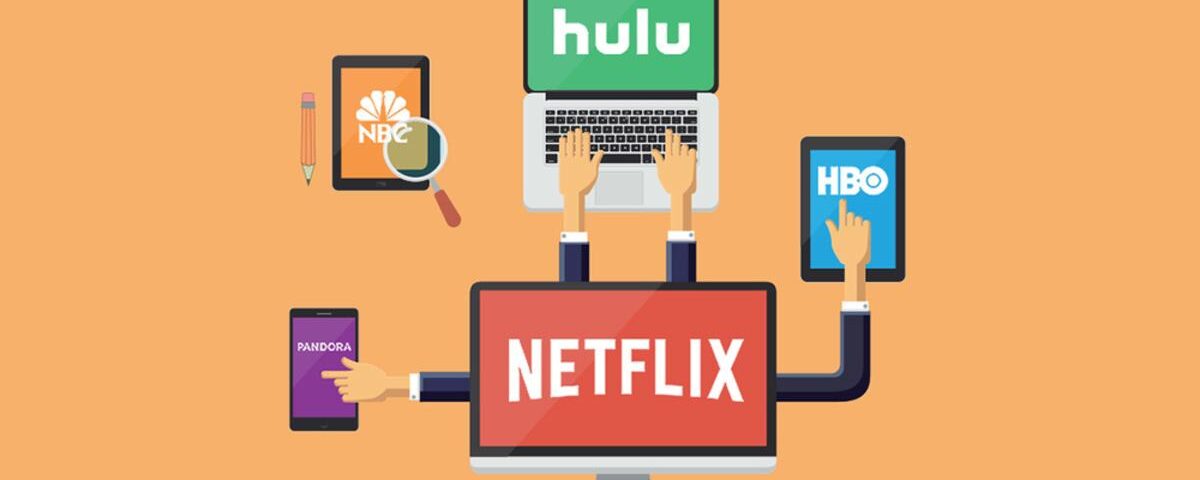Why Streaming Platforms Are Changing How We Watch TV

The Evolution of Online TV: From Cable Boxes to Smart Streaming
August 26, 2025
The Rise of 4K and 8K TVs: Do We Really Need Them in the Age of Online Streaming?
August 26, 2025Introduction
Television once had a simple routine: tune in at a scheduled time, watch the show, and discuss it the next day with friends or colleagues. But the arrival of streaming platforms has completely disrupted that rhythm. Online TV has revolutionized how audiences consume entertainment. Today, we don’t wait for content to arrive—we choose it instantly, binge it if we like, and stream it across multiple devices. Services like Netflix, Hulu, Disney+, Amazon Prime Video, and HBO Max have not only changed viewing habits but also reshaped the entire entertainment industry.
From Appointment Viewing to On-Demand Freedom
In the past, TV shows were tied to strict schedules. Missing an episode meant waiting for a rerun. Viewers were dependent on networks to dictate what they could watch and when. Streaming flipped this relationship. Now, people decide the time, the place, and the pace of their viewing. Want to watch a 10-episode season in one night? That’s possible. Want to pause halfway and resume days later? No problem.
This freedom has reshaped how audiences engage with stories. Instead of fragmented experiences spread over months, viewers can immerse themselves fully in the narrative world. Streaming platforms have effectively handed control back to the consumer.
Binge-Watching: A Cultural Shift
One of the biggest cultural phenomena born from streaming is binge-watching. Netflix popularized the “all episodes at once” model, allowing people to watch shows like Stranger Things or Money Heist in a single weekend. Binge-watching has become so common that it shapes social conversations. Entire communities online discuss shows within days of their release.
But binge-watching also comes with challenges. It can disrupt sleep, reduce productivity, and even cause emotional fatigue after long viewing sessions. Despite this, the appeal remains strong. The sense of immersion and control keeps binge culture thriving, and networks are constantly weighing the pros and cons of releasing content all at once versus weekly drops.
The Streaming Wars: Too Many Options?
The rise of streaming platforms has also sparked fierce competition. Netflix may have been the pioneer, but now it battles with Disney+, HBO Max, Peacock, Paramount+, Apple TV+, and Amazon Prime Video. Each platform invests heavily in exclusive shows and movies to attract subscribers.
For example:
- Disney+ offers The Mandalorian and Marvel blockbusters.
- HBO Max has House of the Dragon and DC titles.
- Netflix invests billions in originals like The Witcher.
While this competition benefits viewers with diverse options, it also creates “subscription fatigue.” Many households subscribe to three or more services, often spending as much—or more—than they did on cable. The industry faces a challenge: will platforms consolidate into bundles, or will consumers eventually pick just one or two favorites?
Global Reach: Breaking Boundaries
Another way streaming has changed TV is by removing geographic restrictions. In the past, shows aired in one country and took months—or even years—to appear elsewhere. Today, a new Netflix series can premiere simultaneously in 190 countries.
This global accessibility has introduced audiences to international shows and films like never before. Korean dramas (Squid Game), Spanish thrillers (Money Heist), and German mysteries (Dark) have become global hits, proving that good stories transcend language barriers. Subtitles and dubbing make it easy for anyone to enjoy content from around the world, creating a more connected entertainment culture.
Personalization Through Algorithms
One of the biggest advantages of streaming platforms is personalization. Unlike traditional TV, which shows the same programs to everyone, streaming services use algorithms to recommend content based on viewing history. Netflix’s homepage looks different for each user, highlighting titles tailored to individual preferences.
This personalization keeps viewers engaged longer but also raises questions. Are algorithms limiting our exposure by showing only “safe” suggestions similar to what we already like? Or are they helping us discover new favorites we might have overlooked? Either way, personalized recommendations have become a powerful driver of how people consume online TV.
The Impact on Traditional Networks
The rise of streaming has forced traditional broadcasters to adapt or risk extinction. Networks like NBC (with Peacock) and CBS (with Paramount+) have launched their own platforms. Sports, once the stronghold of live TV, is also moving online. Amazon Prime has secured exclusive NFL streaming rights, and ESPN+ delivers live sports events digitally.
Advertising, too, has shifted. Streaming platforms that once promised “ad-free” experiences are now experimenting with lower-cost, ad-supported plans. This hybrid model mimics traditional TV but with more targeted ads powered by viewer data.
The Future of Streaming Platforms
The future of online TV points toward even more personalization and interactivity. We may soon see more interactive shows, where viewers shape the plot in real time. Advances in AI-driven content creation could allow platforms to customize trailers or even generate unique episodes based on audience preferences.
Another frontier is virtual reality integration. Imagine putting on VR glasses and stepping into the world of your favorite series. Combined with 5G internet and cloud technology, the possibilities are limitless.
Conclusion
Streaming platforms have not just changed how we watch TV—they’ve redefined what television means. The shift from scheduled programming to on-demand streaming has empowered viewers, transformed global entertainment, and fueled an entirely new industry of binge-worthy content. While challenges like subscription fatigue and content overload remain, one thing is certain: streaming is here to stay.
Television is no longer about waiting—it’s about choosing, experiencing, and connecting with stories on your own terms. And in this new era, the screen in your hand or your living room has become the gateway to limitless worlds of imagination.





